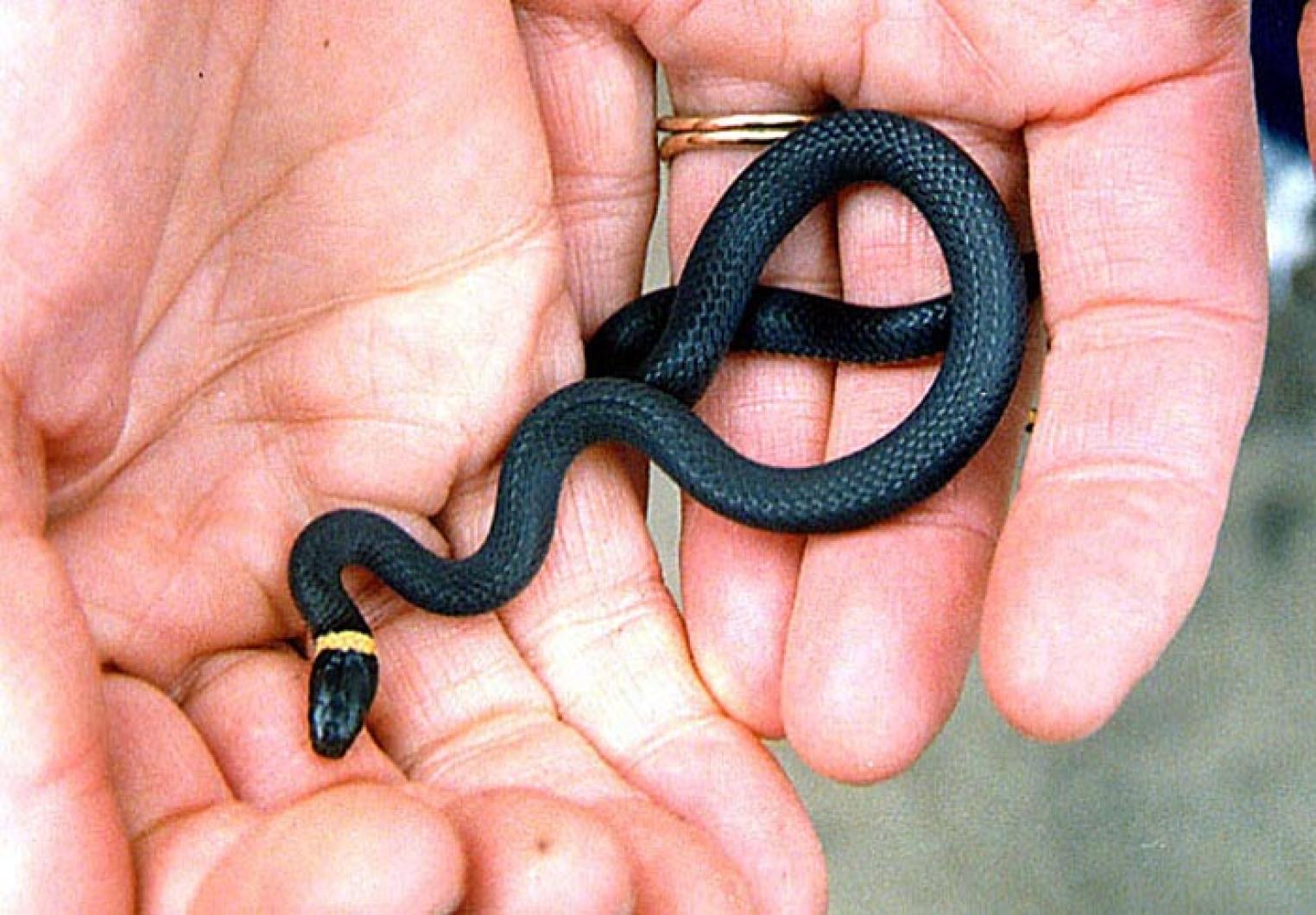Mae West cynically noted that “Opportunity knocks for every man, but you have to give a woman a ring.”
An interesting ring coiled around my fingers last week. It was not the kind that Mae had in mind, but it was one that did provide me with a great opportunity to examine one of the more elusive snakes on Martha’s Vineyard: the ring neck snake.
The little ring neck snake that slithered into my life was a baby, measuring only a few inches, and was thinner than a chop stick. By picking this reptile up for a closer look, I was following only part of W.C. Fields’ advice for snake charmers. He said, “Always carry a flagon of whiskey in case of snakebite and furthermore always carry a small snake.”
In this case, I did not have to worry about a snake bite. As members of the Colubrid family, ring neck snakes are ‘rear fanged,’ meaning that their fangs are located in the back of their upper jaw. And though ring neck snakes do produce mild venom, I was in no danger as they rarely are able to break human skin and must chew vigorously to inject their venom. To frighten potential predators, the ring neck will rear up its tail and coil it, showing its colorful yellow or red underside. It will also release a foul-smelling substance to deter its enemy.
Frogs, earthworms, other small snakes and especially red backed salamanders are the preferred meal for the ring neck snake. Killing prey is accomplished by both envenomation and constriction, though in the case of small prey, this snake can swallow it whole!
The ring neck is no snake in the grass. It prefers to reside in safety under rocks, logs, and even in the foundation of homes and buildings. Though these snakes are generally nocturnal, I found the snake during the day on the concrete floor of the Felix Neck Nature Center.
Young ring neck snakes are often seen this time of year. This reptile is oviparous, or egg-laying, unlike other snakes, including garter snakes that are viviparous, or give birth to live young. Though ring neck snakes mate in the spring, laying up to 10 eggs, their young don’t hatch from these eggs until later summer. The young ring neck snakes are precocial and require no parental care. They follow another of W.C. Fields’ rules, the one that says, “Children should neither be seen nor heard from – ever again.”
To positively identify this snake, look to its name. A yellow (or sometimes red) ring is present behind its head and the same color is found on its ventral or underside. With a mostly grey body, the bright color of its ring and belly provide a stark contrast. It is one of the smaller Island snakes, with a length of up to 15 inches. The female is larger, and both sexes can live up to 20 years.
This found ring held no real monetary value, only sated my curiosity, so I released it from my fingers and encouraged it on its way with a bit more of Mae’s advice; “You only live once, but if you do it right, once is enough.”
Suzan Bellincampi is director of the Felix Neck Wildlife Sanctuary in Edgartown.




Comments (1)
Comments
Comment policy »